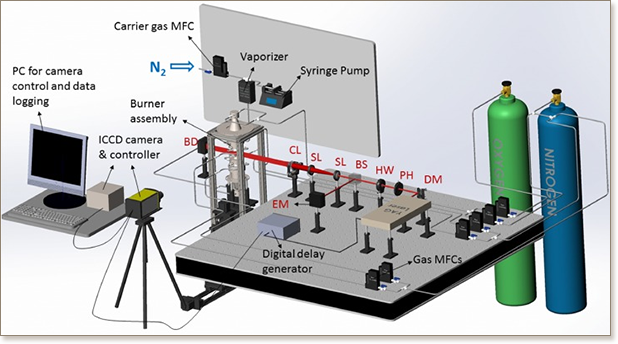A comparative study on the sooting tendencies of various 1-alkene fuels in counterflow diffusion flames


Alkenes are important components in transportation fuels, and are known to have increased sooting tendencies compared to analogous saturated hydrocarbons with the same carbon number. This work aims to understand the sooting tendencies of various 1-alkenes through experiments and numerical simulations for counterflow diffusion flames. Soot and PAH formation tendencies of 1-alkene fuels, including ethylene (C2H4), propene(C3H6), 1-butene (1-C4H8), 1-pentene (1-C5H10), 1-hexene (1-C6H12) and 1-octene (1-C8H16), were experimentally studied using laser induced-incandescence (LII) and laser-induced fluorescence (LIF) techniques, respectively. From the LII results, 1-C4H8 was found to be the most sooting fuel, followed by C3H6 > 1-C5H10 > 1-C6H12 > 1-C8H16 > C2H4. The LIF data with a detection wavelength of 500 nm indicated the PAH formation tendencies followed the order of 1-C4H8 > 1-C5H10 ∼1-C6H12 > C3H6 > 1-C8H16 > C2H4, which were different from the order of sooting tendencies. Numerical simulations with a comprehensive chemical kinetic model including PAH growth chemistry for the tested 1-alkene fuels were conducted to elucidate the aromatic formation pathways and rationalize the experimentally observed trends. The numerical results highlighted the importance of intermediate species with odd carbon numbers in aromatic species formation, such as propargyl, allyl, cyclopentadienyl and indenyl radicals. Their concentration differences, which could be traced back to the parent fuel molecules through rate of production analysis, rationalize the experimentally observed differences in soot and PAH formation tendencies.
DOI: 10.1016/j.combustflame.2018.01.033

"KAUST shall be a beacon for peace, hope and reconciliation, and shall serve the people of the Kingdom and the world."
King Abdullah bin Abdulaziz Al Saud, 1924 – 2015
Thuwal 23955-6900, Kingdom of Saudi Arabia
© King Abdullah University of Science and Technology. All rights reserved